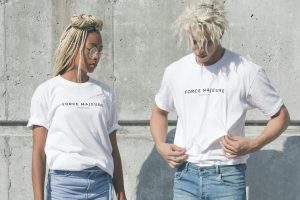The Secret History of Logomania: Why Branded Clothing Refuses to Die
If you walk down any busy street in a major city, you’ll likely see a sea of branded clothing. From designer labels to fast fashion logos, it seems that branded clothing is everywhere. While some may see this as a recent trend, the truth is that logomania has been around for decades. In fact, the history of logomania is a fascinating one, filled with marketing strategies, changes in consumer behavior, and the rise of consumer culture. So why is it that branded clothing refuses to die? Let’s take a closer look at the secret history of logomania and find out.
The Marketing Strategy Behind Logomania
While branded clothing has been around for centuries, the true rise of logomania can be traced back to the 1980s and 1990s. During this time, brands like Calvin Klein, DKNY, and Tommy Hilfiger started using their logos prominently on their clothing and in their advertising. This wasn’t just a coincidence – it was a calculated marketing strategy.
By prominently featuring their logos, these brands were able to create a sense of exclusivity and wealth around their products. Wearing a branded item meant that you could afford to buy something from a high-end designer, even if it was just a t-shirt with a logo on it. This type of marketing was also seen as a way to increase brand recognition and loyalty among consumers.
The Cult of Celebrity and Logomania
In the 2000s and 2010s, the rise of social media and celebrity culture helped to further fuel logomania. Celebrities started becoming walking billboards for luxury brands, with their photos and outfits being dissected and shared on social media. This resulted in a desire among consumers to emulate their favorite celebrities by wearing the same branded clothing.
In addition, many luxury brands started collaborating with celebrities on limited edition collections, creating a sense of exclusivity and hype around the products. This not only drove up demand but also cemented the association between celebrities and branded clothing.
Consumer Culture and the Need for Status Symbols
Another factor that contributes to the popularity of branded clothing is our consumer culture and the need for status symbols. In today’s society, what we own and wear is often seen as a reflection of our social status and success. This drives consumers to seek out items that are seen as prestigious and that help them project a certain image to others.
Branded clothing, with its recognizable logos and high price tags, serves as a way for individuals to showcase their wealth and social standing. In a world where social media reigns supreme, many consumers want to be seen wearing the latest designer pieces and sharing their luxury purchases online.
The Power of Nostalgia
The final piece of the puzzle in the secret history of logomania is nostalgia. Nostalgia has become a powerful marketing tool, with brands using past designs and logos to create renewed interest in their products. Many brands have brought back their iconic logos from the 90s and early 2000s, tapping into the trend of nostalgia-driven fashion.
For many consumers, buying a piece with a familiar logo of a brand they loved in their youth is a form of comfort and familiarity. As a result, branded clothing continues to stay relevant and in demand, even when other fashion trends come and go.
In Conclusion
In the end, the secret history of logomania comes down to clever marketing, our consumer culture, and our desire for status symbols and nostalgia. As long as these factors remain relevant, branded clothing will continue to dominate the fashion industry. Whether we like it or not, logomania is here to stay.











